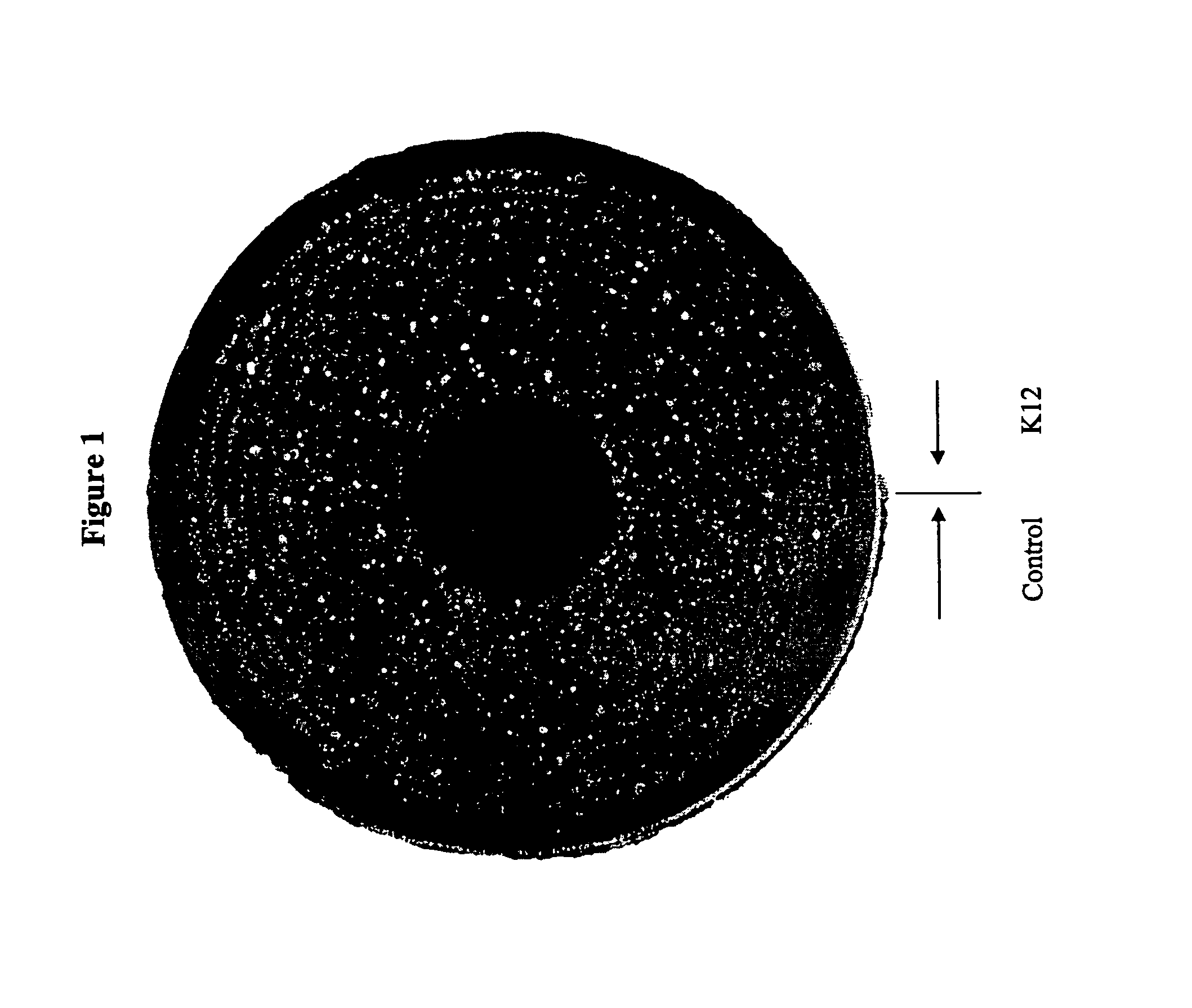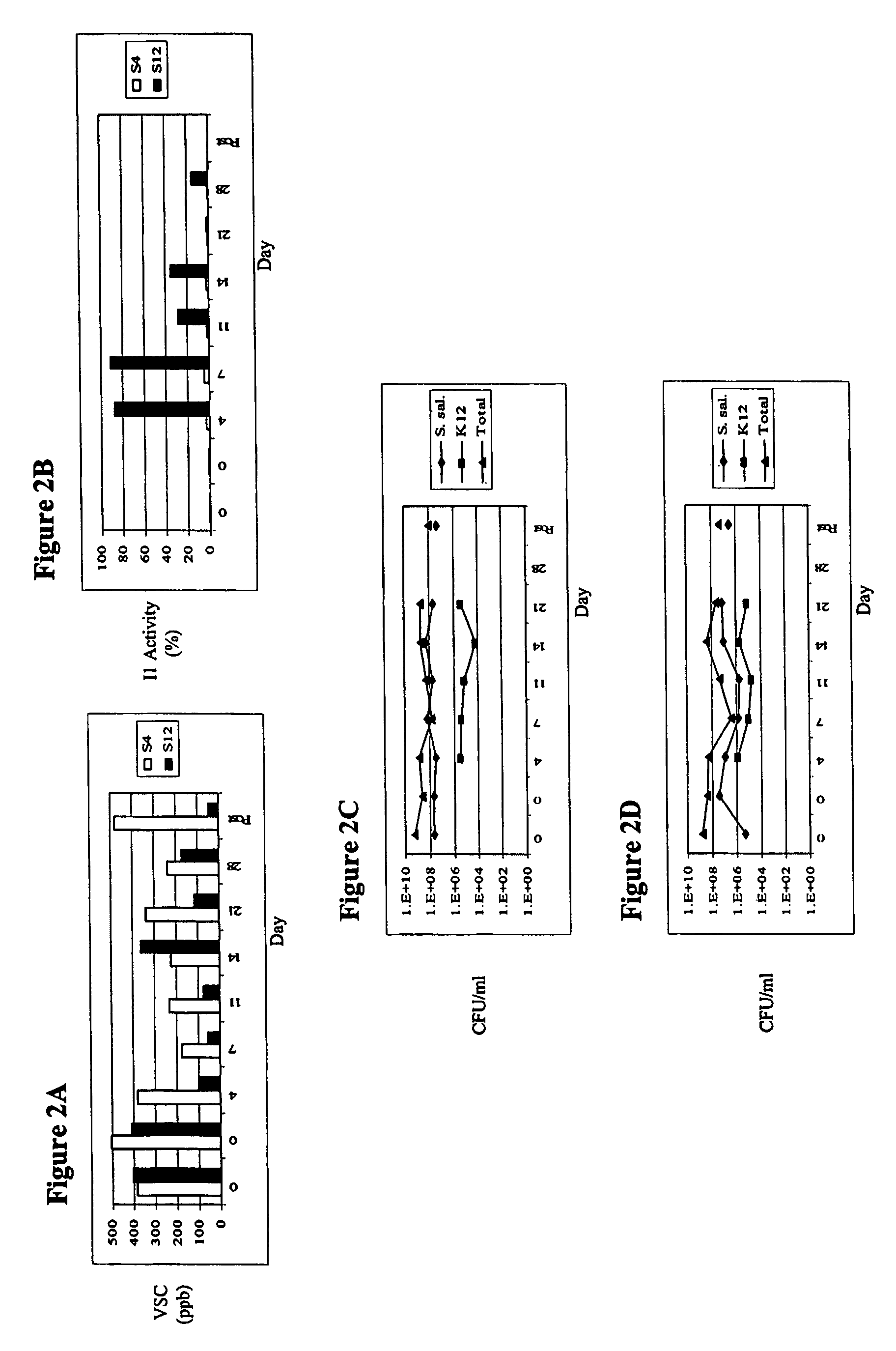Treatment of malodour
a technology of malodour and malodour, which is applied in the field of inhibiting the growth of anaerobic bacteria, can solve the problems that the current methods of treating halitosis require complex physical, chemical or expensive regimes to be carried out, and achieve the effect of inhibiting growth
- Summary
- Abstract
- Description
- Claims
- Application Information
AI Technical Summary
Problems solved by technology
Method used
Image
Examples
examples
Deferred Antagonism Test of Anti-Bacterial Activity
[0097]The spectrum of inhibitory activity of Streptococcus salivarius K12 and K30 was established by use of a deferred antagonism test, essentially as described by Tagg and Bannister (J. Med. Microbiol. 1979; 12:397). In brief, a 1-cm wide diametric streak culture of K12 and K30 (producer strain) was inoculated onto blood agar-calcium medium (Columbia agar base plates, 5% human blood, 0.1% CaCO3 [BDH]). Following incubation in a 5% CO2 atmosphere, for 24 hours at 37° C., the macroscopic cell growth was removed with a glass slide and residual cells on the agar surface were killed by exposure to chloroform vapours for 30 minutes. The agar surface was then aired for 30 minutes. Indicator strains implicated in halitosis which had been grown for 48 hour on blood agar-calcium plates, were suspended in Todd Hewitt broth and used to inoculate at 90-degree angles across the line of the original streak culture with the use of sterile cotton s...
PUM
| Property | Measurement | Unit |
|---|---|---|
| pH | aaaaa | aaaaa |
| volatile | aaaaa | aaaaa |
| agar surface assays | aaaaa | aaaaa |
Abstract
Description
Claims
Application Information
 Login to View More
Login to View More - R&D
- Intellectual Property
- Life Sciences
- Materials
- Tech Scout
- Unparalleled Data Quality
- Higher Quality Content
- 60% Fewer Hallucinations
Browse by: Latest US Patents, China's latest patents, Technical Efficacy Thesaurus, Application Domain, Technology Topic, Popular Technical Reports.
© 2025 PatSnap. All rights reserved.Legal|Privacy policy|Modern Slavery Act Transparency Statement|Sitemap|About US| Contact US: help@patsnap.com


